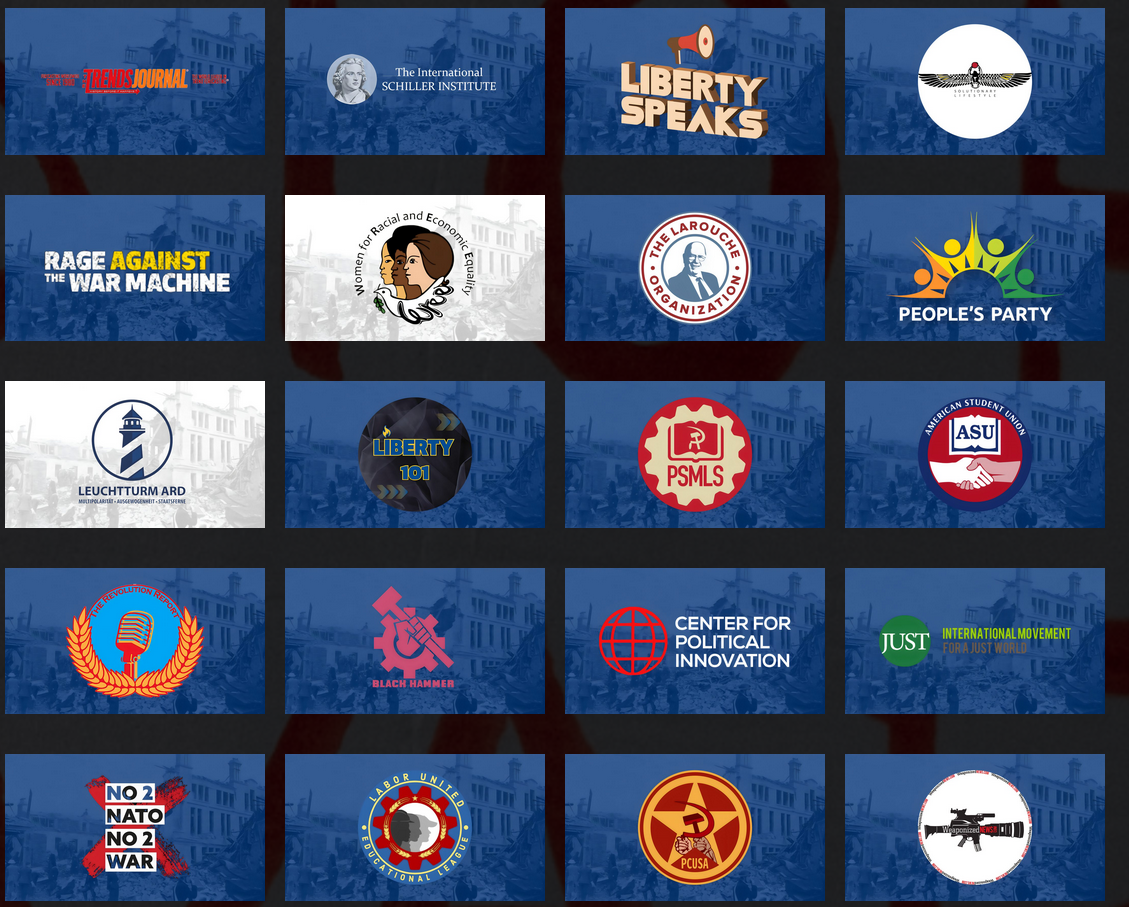archive : https://ghostarchive.org/archive/NLeTL
Coming from the Congo, I knew where the essential ingredient for the atomic bombs was mined, even if everyone else seemed to ignore it.
Papà, my dad, told me a story long ago about the uranium that powered the first nuclear bombs. The ones dropped on Hiroshima and Nagasaki; the bombs you saw being built in this summer’s dramatic film, Oppenheimer. Papà, you see, was born in the Belgian Congo.
Earlier this summer, I was invited to a screening of the blockbuster. The film’s director, Christopher Nolan, was there too. In a recurring scene, meant to symbolize the inching along of the scientists’ efforts, Oppenheimer fills an empty glass bowl with marbles—first one at a time, then in handfuls. The marbles represent the amount of uranium that has been successfully mined and refined to power the nuclear reaction. The outcome of World War II, and the future of humanity, hinges on who can create that monster first—the Axis or the Allies. The closer we get to the bomb’s completion, the more marbles go into the bowl. But there’s no mention in the film of where two-thirds of that uranium came from: a mine 24 stories deep, now in Congo’s Katanga, a mineral-rich area in the southeast.
As the marbles steadily filled the bowl onscreen, I kept seeing what was missing: Black miners hauling earth and stone to sort piles of radioactive ore by hand.
Papà was born in 1946 at Mission Ngi, a tiny Belgian missionary outpost. He told us how, growing up, the Belgians taught the Congolese to worship God; how the Belgians addressed Congolese adults with the informal French tu, not the formal vous; how the Belgians said eating with your hands, as Papà did at home, was uncivilized. The Congolese were backward and ancillary to modern life, Papà learned in school. So did I. And yet, Papà said, the Congolese were the essential ingredient, the sine qua non, of arguably the most consequential creation in modern history.
In 1885, when King Leopold II of Belgium first claimed ownership of this massive stretch of land sitting on the world’s deepest river, smack in the center of Africa, he called it Congo Free State. Of course, life for the roughly 10 to 20 million inhabitants meant surviving violence and a terror state run by the king. Throughout the territory, which was converted into a series of cotton and rubber plantations, the king’s soldiers amputated the forearms of Congolese people who didn’t meet harvesting quotas. King Leopold’s policies drove famine and disease. Millions didn’t make it.
In 1908, when the Belgian government snatched the territory from the king, “Congo Free State” became the “Belgian Congo.” At that point, writes historian Susan Williams, author of Spies in the Congo, the private sector replaced the king as the extractor of Congo’s natural resources. The violence remained. What’s more, while the Belgian officials let Christian missionaries begin formally educating kids, they were worried that literate Congolese would overturn the colony. Papà told me how schooling beyond the fifth grade was illegal for most Congolese kids. Papà, to the delight of his own father, would chance into one of the colony’s exceptions—education for those who would become priests—an opportunity even some of Papà’s elder siblings wouldn’t have.
As the marbles steadily filled the bowl onscreen, I kept seeing what was missing: Black miners hauling earth and stone to sort piles of radioactive ore by hand.
The colonial system built workers—or borderline enslaved people—not scholars. An American officer who traveled to the Belgian Congo described a scene he saw on his first day: A Congolese man in ragged shorts knelt on the ground, a Belgian officer towering over him with a chicote, a leather whip tipped with metal ends. “The whip whistled … Every lash was followed by a scream of agony … The black’s skin from neck to waist was a mass of blood with ribs shining through.” This, the American reported, was punishment for stealing a pack of cigarettes from a Belgian. “Welcome to the Congo,” the American was told.
The largest company in the Belgian Congo was the mining company Union-Minière du Haut-Katanga. The colonial government had granted it the rights to an area spanning nearly 8,000 square miles, over half the size of Belgium. One of the mines there, Shinkolobwe, was rich with uranium. In fact, it was filled with uranium that the Congolese had already excavated and placed aboveground. Initially, uranium was just a waste byproduct of digging for the more valuable radium, which Nobel-prize winner Marie Curie had helped discover could treat cancer. In 1938, using uranium, the physicists Lise Meitner and Otto Frisch worked out the calculations that defined nuclear fission. If enough nuclei were split, scientists realized, massive amounts of energy could be emitted. Uranium was now coveted.
In 1939, just before the start of World War II, Albert Einstein wrote a letter to President Franklin D. Roosevelt with a muted warning: “The element uranium may be turned into a new and important source of energy in the immediate future … It is conceivable … that extremely powerful bombs of this type may thus be constructed.” Einstein’s letter mentioned four known uranium sources: the United States, which “has only very poor ores of uranium in moderate quantities”; Canada and the former Czechoslovakia, where “there is some good ore”; and Congo—“the most important source of uranium.” According to Jean Bele, a Congolese nuclear physicist at MIT, 100 kilograms of Congolese uranium ore could yield about 1 kilogram of refined uranium. The same amount of ore from the other locations would yield only 2 or 3 grams of the refined uranium necessary for such a weapon.
The mining company typically built fenced-in compounds that resembled prison camps for the workers and their families; the company initially gave each family about 43 square feet—the size of a small garage—and weekly food rations. At work, miners sorted uranium ore by hand. One person described a piece of Shinkolobwe uranium as a block “as big as a pig.” It was “black and gold and looked as if it were covered with a green scum or moss.” He called them “flamboyant stones.”
The director of Union-Minière du Haut-Katanga was Edgar Sengier, a pale Belgian man with a sharply cut mustache. Having seen Germany invade Belgium in World War I, Sengier was unsure about what Hitler’s invasion of Poland in September 1939 foretold. Would Belgium—or even the African colonies—be next? So in October, he fled Belgium for New York City and transferred the mining company’s business operations there. However, before he had set up shop, a British chemist and the Nobel Prize–winning scientist Frédéric Joliot-Curie, son-in-law of Marie Curie, tipped off Sengier that the uranium in Congo might become essential in the war. The next fall, Sengier ordered that it be shipped to New York.
So Congolese workers carried and loaded the ore. It was sent by train to Port Francqui (now Ilebo), then by boat down the Kasai and Congo Rivers to the capital, Leopoldville (now Kinshasa). At the port of Matadi, the uranium began its trek across the Atlantic Ocean, past German U-boats, to a warehouse on Staten Island. Sengier stored more than 2.6 million pounds of ore in the States. About 6.6 million pounds remained in Shinkolobwe.
In May 1940, Hitler invaded France and Belgium. The Belgian government fled to London, and the Third Reich installed a pro-Nazi government in Belgium. The governor-general of the Belgian Congo, however, declared that the colony would support the Allies. He drafted troops, offered up Congolese laborers, and created production quotas to supply the Allies with necessary war materials. And so, during the war, many Congolese returned to the very forests where their parents and grandparents had had their hands amputated, ordered to cull rubber again, this time for hundreds of thousands of military tires. As the war ramped up, Congolese miners also dug for minerals like copper in around-the-clock shifts.
In Sengier’s mining towns, as elsewhere, the Congolese were unable to move freely without permits. Or to vote. Workers had to be home by 9 pm, lest they suffer harsh consequences. Pay was terrible. But by 1941, though “natives” were excluded from unions, Black workers at several of Sengier’s mines began organizing for higher wages and better labor conditions.
December 7, 1941, Pearl Harbor Day, was not only a pivotal day in the course of the war, but also in the lives of the Congolese mine workers. That day, Sengier’s Black employees organized a massive mining strike across Katanga. In Elisabethville, 500 workers refused to start their shifts. Soon, freshly off-duty miners joined them and assembled in front of management’s offices, demanding a raise. They won an agreement that they could come bargain the next day.
The next morning, the mine workers showed up to the local soccer stadium to negotiate with Sengier’s company and the colonial governor of Katanga. According to conflicting reports, between 800 and 2,000 strikers attended. The company offered a verbal agreement to raise wages. One historian describes it as the “first open expression of open protest in the social history of the Congo.” But when a Congolese worker named Léonard Mpoyi demanded written confirmation of the wage raise, the colonial governor insisted the crowd go home.
“I refuse,” Mpoyi said. “You must give us some proof that the company has agreed to raise our salaries.”
“I have already demanded that you go to the office to check,” replied the governor, Amour Marron. He then pulled a gun from his pocket and shot Mpoyi, point blank. Soldiers opened fire “from all directions.” The mine workers poured out of the stadium. Roughly 70 people died. About 100 were injured.
The next morning, a company loudspeaker summoned everyone back to work.
About a year after Pearl Harbor, President Roosevelt assigned General Leslie Groves to head the Manhattan Project. On his first day, in September 1942, Groves and his deputy, Colonel Kenneth Nichols, talked about how to procure the necessary uranium for the massive project. Nichols told Groves about Sengier, and his uranium. The next morning, Nichols met Sengier in his New York office, and by the end of the meeting they struck a deal on a yellow legal pad. “I want to start hauling the uranium away tomorrow,” Nichols declared. Less than a month later, Groves hired J. Robert Oppenheimer to build the bomb.
Over the next couple years, the Congo became a hotbed for American spies—under the cover of “consulate officer,” “Texaco employee,” a “buyer of silks,” and “live gorilla collector”—there to secure the flow of uranium. General Groves insisted that the US gain complete control of Shinkolobwe and recommended to President Roosevelt that the mine be reopened. The Army Corps of Engineers was sent to the Congo to start up mining operations anew. The mine’s location was scrubbed from maps. Spies were told to eliminate the word “uranium” from their conversations; rather, advisers added, use words like “diamonds.” The company’s miners also began mining for other war-necessary minerals, toiling in sweat by day, and with immense furnaces by night, swarmed by the sound of trains or planes from America. By then, thanks to the mining strike, worker salaries had risen by 30 to 50 percent. Still, some men were forcibly required to mine. From 1938 to 1944, fatal accidents at the company’s plants almost doubled. To avoid rubber quotas, people fled the rural areas for cities like Elisabethville, whose African population swelled from 26,000 in 1940 to 65,000 in 1945.
Spies were told to eliminate the word “uranium” from their conversations; rather, advisers added, use words like “diamonds.”
The US government was also worried about Nazi spies. One American spy was tasked with figuring out if Nazis were smuggling Shinkolobwe uranium. Among Sengier’s many shipments of ore, one was intercepted and sunk by the Nazis.
When they arrived in the US, the flamboyant stones were refined in places like Oak Ridge, Tennessee, and then shipped to Oppenheimer in Los Alamos, New Mexico. It took nearly three years for Oppenheimer and his team to develop the bombs. Even though the Germans surrendered in May 1945 (and it became clear they were not close to completing a nuclear bomb), the war in the Pacific still raged. Ultimately, in August 1945, the US dropped two bombs on Hiroshima and Nagasaki filled with—like Papà said—Congolese uranium.
Jean Bele, the Congolese nuclear physicist, tells me radioactive isotopes are still in the ground near Shinkolobwe today. “Radioactive solids enter the water, the crops, the trees, the soil, the animals, and they get to the humans,” he said. We don’t know the extent of the radiation. We do know that in Oak Ridge there is increased cancer mortality. And near St. Louis, Missouri, where remains of the Congolese ore were dumped, contamination poses risks to workers for the next 1,000 years.
After the screening of Oppenheimer, like a fanboy, I approached Nolan in the lobby. I was able to ask him about the marbles, about why he chose them and what creative issue they solved. He acquiesced with a courtly nod: “I needed a way to demonstrate how long it would have taken to refine all that ore.” Then he added, “The number of marbles was actually mathematically accurate to represent the amount that they needed.”
Of course, without Congo, obtaining all that ore would have been impossible. In a race to build the bomb, both sides wanted the Congolese ore. The Shinkolobwe mine was “a freak occurrence in nature,” according to Colonel Nichols. “Nothing like it has ever again been found.” And that, of course, means that without Congo’s Black workers—terrorized and chicote-d into submission, digging essential war minerals 24 hours a day—the outcome of arguably the most consequential project in human history would have been very different.
In 1946, Sengier became the first non-American to receive the president’s Medal for Merit—“for the performance of an exceptionally meritorious or courageous act” that sealed the Allies’ victory. In a photo from the ceremony, you might see something else: a man with something to hide. Intelligence during the war revealed that Sengier’s company also sold about 1.5 million pounds of Congolese uranium to the Nazis. In 1948, a radioactive mineral was named in Sengier’s honor: sengierite.
At the same time, the Congolese, the people I come from, set about tearing down the colonial systems meant to eclipse their power; they finally won their independence in 1960. Papà was 13 years old then, and though it would take years for him to learn about the uranium miners, he always knew that Congolese people matter to history.

 cars x carnism combo
cars x carnism combo

 didnt read context well enough
didnt read context well enough
 covers this track and the response to it
covers this track and the response to it demonic airport literature fills those things
demonic airport literature fills those things why is it crusty though ?
why is it crusty though ?
I did not just unsub from the dunktank to see people post dunking lemmy screenshots in chapotraphouse, like is no space sacred , I do not care about your internet arguments, please just quarantine them into one space so I can opt out of them
, I do not care about your internet arguments, please just quarantine them into one space so I can opt out of them 